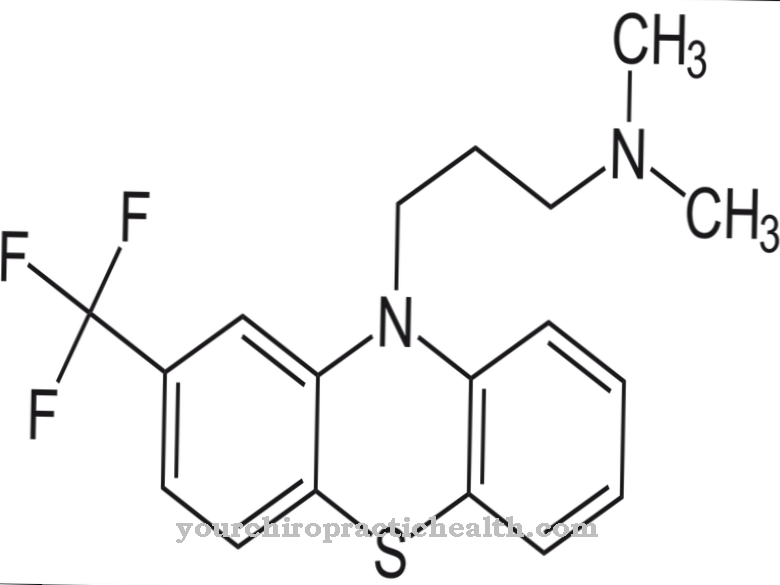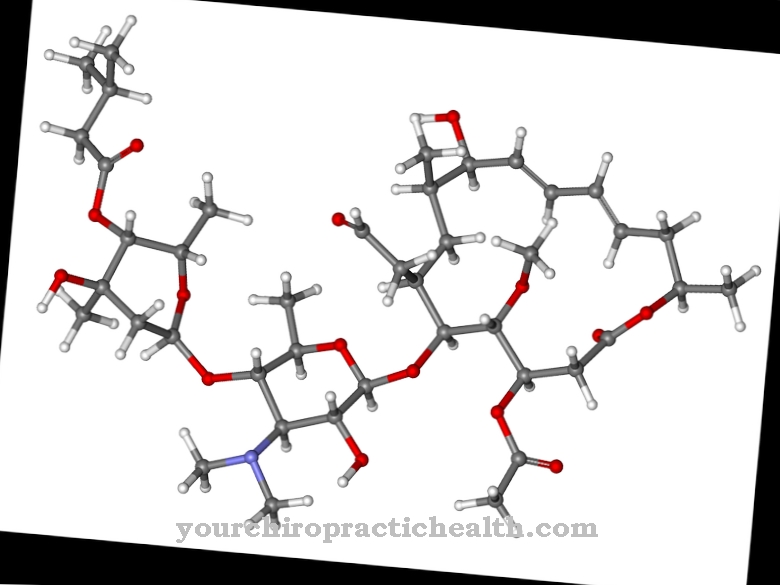The drug Prochlorperazine is mainly used in human medicine as a drug against nausea, vomiting and migraines. The dopamine antagonist is also occasionally prescribed to treat psychiatric or mental illnesses. Prochlorperazine is therefore both an antiemetic and a neuroleptic.
What is prochlorperazine?
The medicinal substance prochlorperazine is one of the antiemetics. This term covers substances or preparations that - like prochlorperazine - are administered against nausea and vomiting.
Since prochlorperazine binds to the dopamine receptors in the human brain, the substance also has psychoactive effects. It is therefore occasionally used as a neuroleptic to treat mental or psychiatric illnesses such as schizophrenia or anxiety disorder in the short, medium or long term. Compared to the antiemetic treatment, however, the dose administered is increased many times over in these cases.
Prochlorperazine is also used to treat severe migraine attacks. The white to yellowish-white substance is described in chemistry and pharmacology by the empirical formula C 20 - H 24 - C - I - N 3 - S, which corresponds to a moral mass of 373.943 g / mol. There is currently no approval in Germany, Austria and Switzerland.
Pharmacological effect
Prochlorperazine belongs to the group of dopamine antagonists due to its pharmacological properties and effects. Antagonists are chemical substances that cancel or reduce the effect of a similar reference substance, the so-called agonist, or cause an opposite effect.
Prochlorperazine, like the reference substance dopamine, binds to the D2 receptors in the human brain. The receptors are blocked by the connection. The result is a drive-reducing, antipsychotic effect that also has slightly sedating effects.
The pharmacological effect of prochlorperazine therefore largely corresponds to the effect of the other phenothiazines such as perphenazine, thioridazine, fluphenazine or thiethylperazine. The literature therefore also reports that prochlorperazine has a slight affinity for the serotonin receptors (5HT2 receptors). The substance therefore also blocks these receptors, which can increase the effect.
Medical application & use
Prochlorperazine has a relatively wide field of application. This is due to the fact that it has neuroleptic or sedative effects as well as antiemetic effects. The treatment or prevention of massive nausea and severe vomiting is one of the main areas of application for prochlorperazine. It is also prescribed to treat migraines.
In addition to this antiemetic area of application, prochlorperazine is also used as a neuroleptic to treat various mental illnesses. These include u. a. Psychoses caused by schizophrenia and various anxiety and obsessive-compulsive disorders.
It is only taken orally in film-coated tablet form. However, the prescribed dose for the therapy of psychiatric illnesses is many times higher than the amount of the active ingredient that is administered for antiemetic treatment.
Prochlorperazine is subject to pharmacy and prescription requirements in every approved country. So the substance cannot be acquired without a doctor's prescription. The allocation takes place exclusively through approved pharmacies.
The best-known preparation, which is based exclusively on prochlorperazine as the active ingredient, is sold in the USA under the trade name Compazine®.
There is currently no approval for prochlorperazine in Germany, Austria and Switzerland. The substance may not be used in any preparation in these countries. However, other medicines are available that have similar effects.
You can find your medication here
➔ Medicines against nausea and vomitingRisks & side effects
As with all medications, before taking prochlorperazine for the first time, it must be checked whether there is an allergy or other intolerance. If this is the case, treatment must not be carried out. Because in these cases there is a contraindication. This describes that a medical contraindication prohibits its use.
Prochlorperazine is also contraindicated if serious diseases of the liver or kidneys have been diagnosed, as these organs play a key role in breaking down the substance. Prochlorperazine must also not be taken together with cisapride, terfenadine or astemizole.
In addition, attention must be paid to interactions with other medicines. Prochlorperazine increases the effects of alcohol and other narcotics, which is typical for representatives of its class of active ingredients. Before performing an operation and administering anesthetics, you should accordingly be advised to take prochlorperazine. The consumption of alcohol should be avoided for the duration of the treatment.
In addition, prochlorperazine can lead to undesirable side effects after ingestion, but this does not necessarily have to be the case. The most common side effects of prochlorperazine include: a. Disorders of the extrapyramidal motor system (EPMS), a noticeable drop in blood pressure (hypotension), an excessive heart rate (tachycardia) as well as headaches, general malaise and dry mouth. If side effects occur, medical advice should be sought immediately.

























.jpg)

.jpg)
